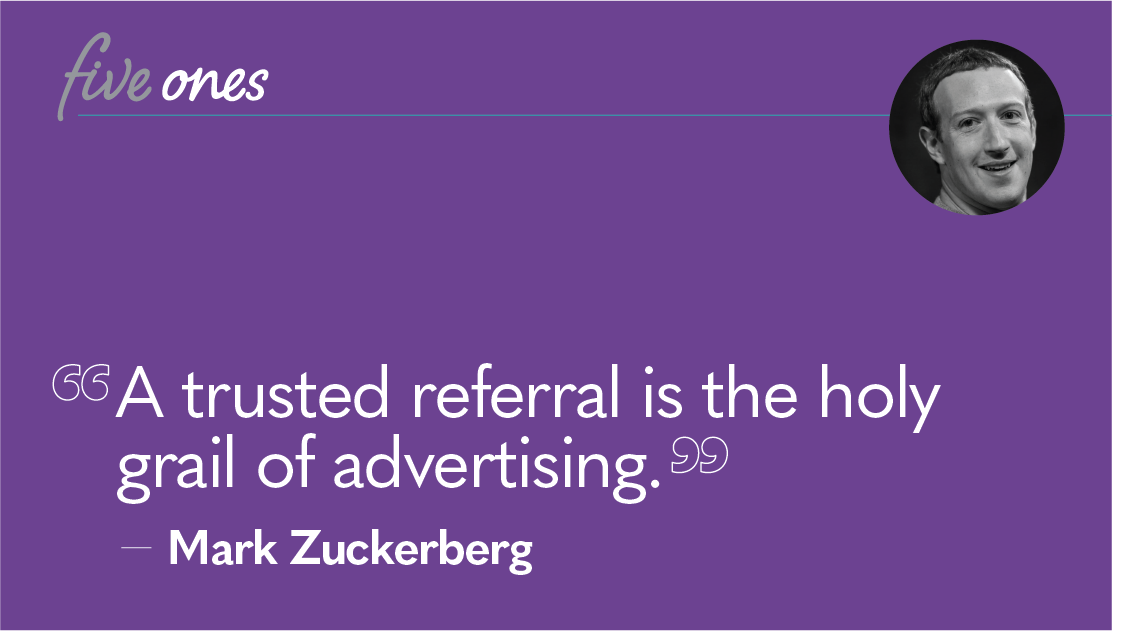
The Power of Influencer Marketing for Nonprofits: 5 Smart Strategies That Work
If you’ve ever bought a product or used a service because someone you follow on social media endorsed it, you experienced influencer marketing. When celebrities like Oprah convince people to sign up with Weight Watchers, that’s influencer marketing. When your favorite Instagrammer does a story on how their favorite nonprofit helped a family friend in need and asks you to donate, that’s influencer marketing, too.
Influencer marketing works, and it’s the reason so many businesses use it. It works because consumers already trust these social media celebrities, and, trusting them, they accept their endorsements at face value.
And the good news for marketers is that influencer marketing works across a wide swath of industries, products, and services. It works for B2B and B2C companies. It works in fashion, auto, food and health and beauty—and influencer marketing, when effectively leveraged, can be a game-changer for nonprofits.
WHAT PRECISELY IS INFLUENCER MARKETING?
On average (according to Business Journals), consumers see more than 4,000 ads every day—and that’s a big increase over the past 20 years or so. That’s a lot of ads, so many in fact that consumers have become increasingly suspicious of (and frustrated with) the messaging in those ads. So, then came the rise of “inbound marketing.” Instead of pushing ads, inbound marketing seeks to pull you closer with content designed to rebuild the trust that may have been broken with traditional advertising and marketing techniques.
IT’S ALL ABOUT BUILDING TRUST
Influencer marketing works because consumers already trust and respect the people endorsing a company’s products or services. Sprout Social defines this marketing approach as:
“At a fundamental level, influencer marketing is a type of social media marketing that uses endorsements and product mentions from influencers–individuals who have a dedicated social following and are viewed as experts within their niche. Influencer marketing works because of the high amount of trust that influencers have built up with their following, and recommendations from them serve as a form of social proof to your brand’s potential customers.”
INFLUENCER MARKETING: A POTENTIAL GAME CHANGER FOR NONPROFITS
Building trust and creating an emotional connection with consumers is a nonprofit’s business (hello, storytelling!) so it’s no surprise that influencer marketing is equally effective for nonprofit organizations. Take the example of one prominent nonprofit—the American Society for the Prevention of Cruelty to Animals (ASPCA). They asked permission to use singer-songwriter Sara McLaughlin’s hit single, “Angel,” to inform viewers about animal cruelty. According to the New York Times, that influencer campaign through the popularity of the song, Sara’s unique and beloved raspy voice, proved to be the nonprofit’s most successful fundraising effort ever, generating more than $30 million since its inception in 2007.
WHAT ARE BEST PRACTICE STRATEGIES FOR NONPROFIT INFLUENCER MARKETING?
Every nonprofit is different, of course, with different donor bases, different goals, and different marketing challenges. That said, here are five highly effective strategies, when used together, that work:
1. IDENTIFY YOUR CAMPAIGN GOALS
You can’t achieve an objective without a plan, a plan that includes realistic, measurable goals. Those goals could be to build brand awareness, increase followers on Facebook, boost conversions on your website, or ramp up donations. The point is that, whatever the objectives of your influencer campaign, you need to identify goals before you even get out of the gate.
Use the SMART approach to ensure you’ll have a meaningful impact for your mission:
- Specific
- Measurable
- Attainable
- Realistic
- Time-bound
2. FIND INFLUENCERS RELEVANT TO YOUR NONPROFIT
It used to be the case that “influencer” meant “celebrity.” As Beth Kanter (a nonprofit marketing goddess!) explains, however, the advent of social media changed all that. Today, the important criterion is not how famous an influencer is, but rather how much trust your target audience has invested in that person, and how relevant they are to your nonprofit niche.
In some cases, you’ll already be aware of these key influencers. In others, you’ll need to do some homework to find them. Some agencies specifically help connect you to influencers as well as many online tools, like Mavrck. Don’t cut your research time short because identifying the right influencers will make or break your efforts.
3. NURTURE YOUR SHORT LIST OF INFLUENCERS
You could, of course, communicate with target influencers via email, but it’s usually more effective to first cultivate your relationship with them online. You could start by sharing some of their content, asking them to write a guest blog or inviting them to a key organization event, perhaps as a keynote speaker. Because most of your target influencers are likely to be juggling many requests from brands, they need to prioritize their commitments—nurturing your budding relationship with them is likely to put your nonprofit near the top of the “yes” list.
4. CREATE AND LAUNCH YOUR CAMPAIGN
Once you know what your goals are and have commitments from your influencers, it’s time to design your influencer campaign. It will have more impact if you work with the influencers to ensure that your campaign feels authentic, in their own voice and meaningful for their followers. Nothing kills trust more than a scripted sponsored ad on someone’s story.
5. MEASURE RESULTS
Measurement of progress towards your goals is critically important. Using effective analytics tools will tell you which tactics are working, which need a bit of a tweak, and which you should abandon and replace. Make sure your influencers are given unique URLs to use that will allow you to effectively track who drove the most traffic.
CONCLUSION
Competition for donations and other forms of support is arguably stiffer than ever. The organizations that succeed are the ones that embrace innovative marketing approaches that connect with prospects on an emotional level and gently build trust over time. One of the best ways to do that is with carefully crafted influencer marketing campaigns. The first step is to think of an upcoming campaign that you could incorporate it into and test the waters. Good luck!



